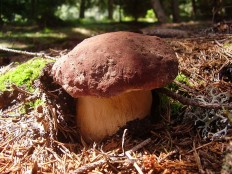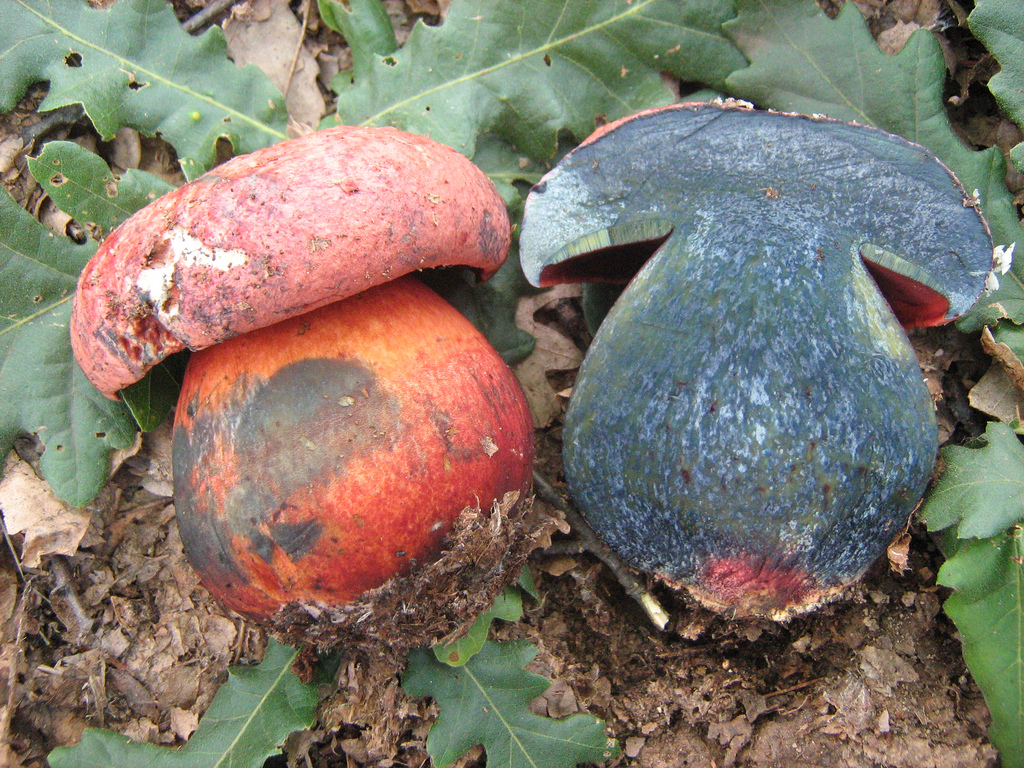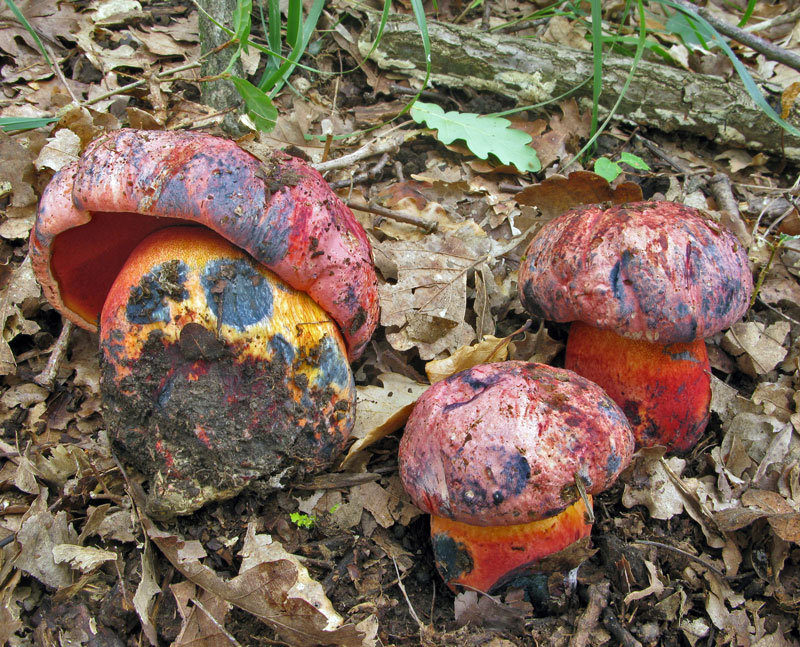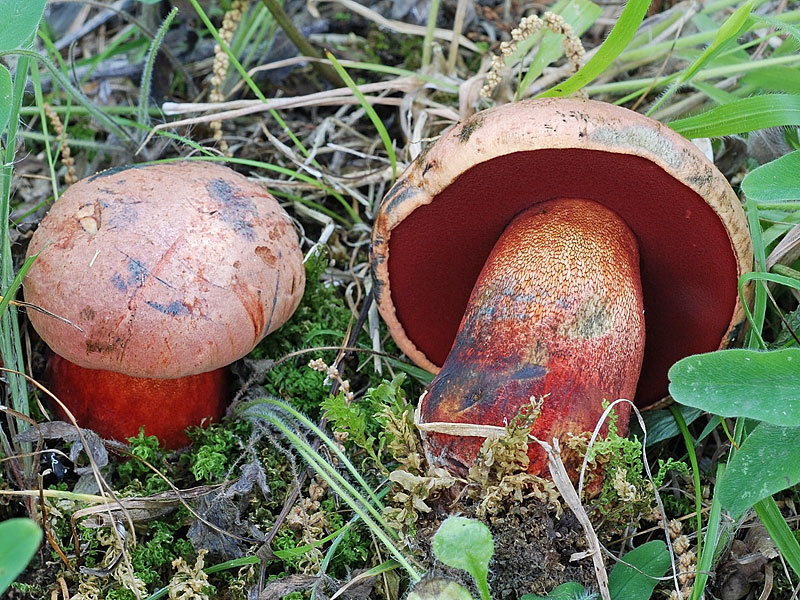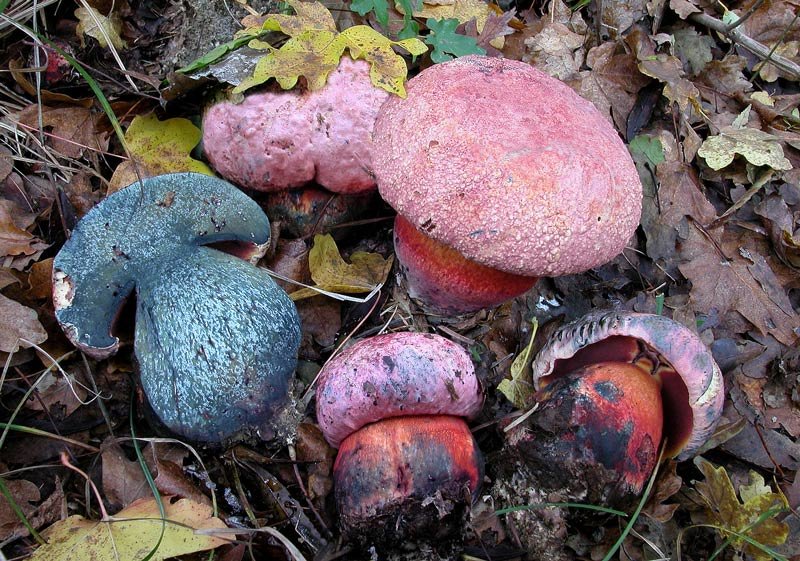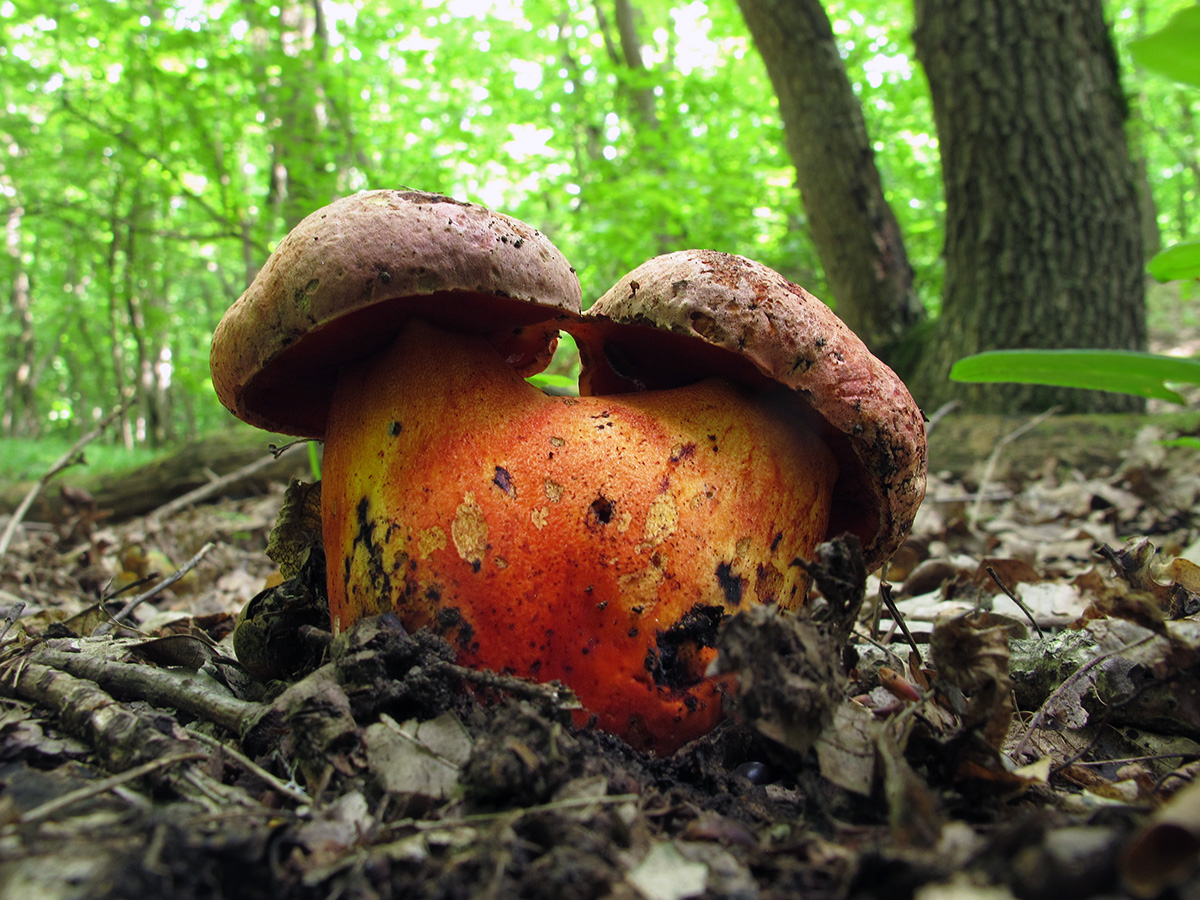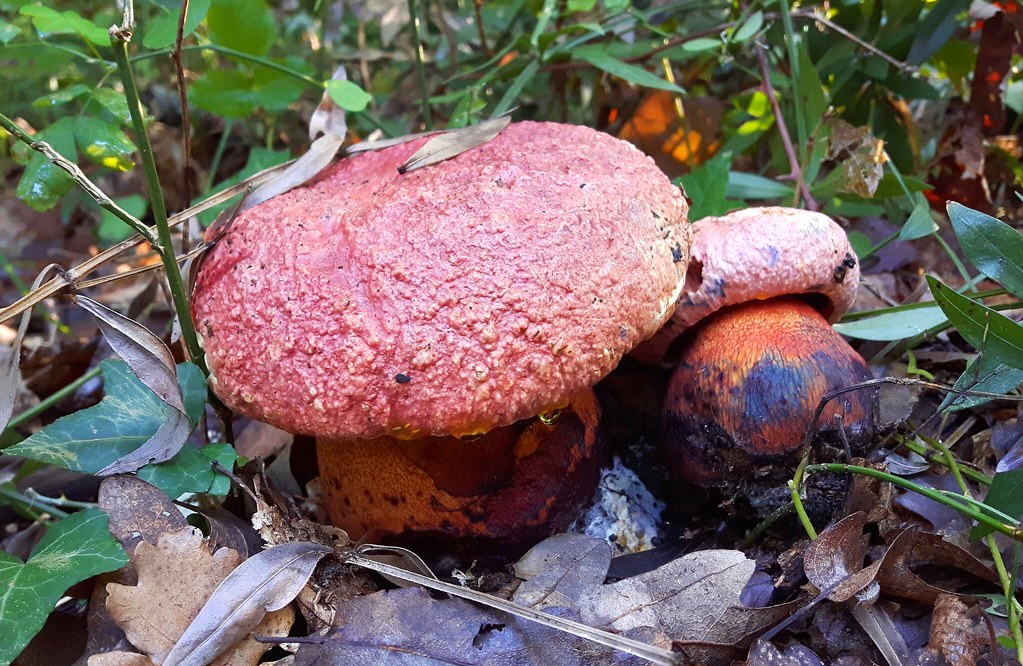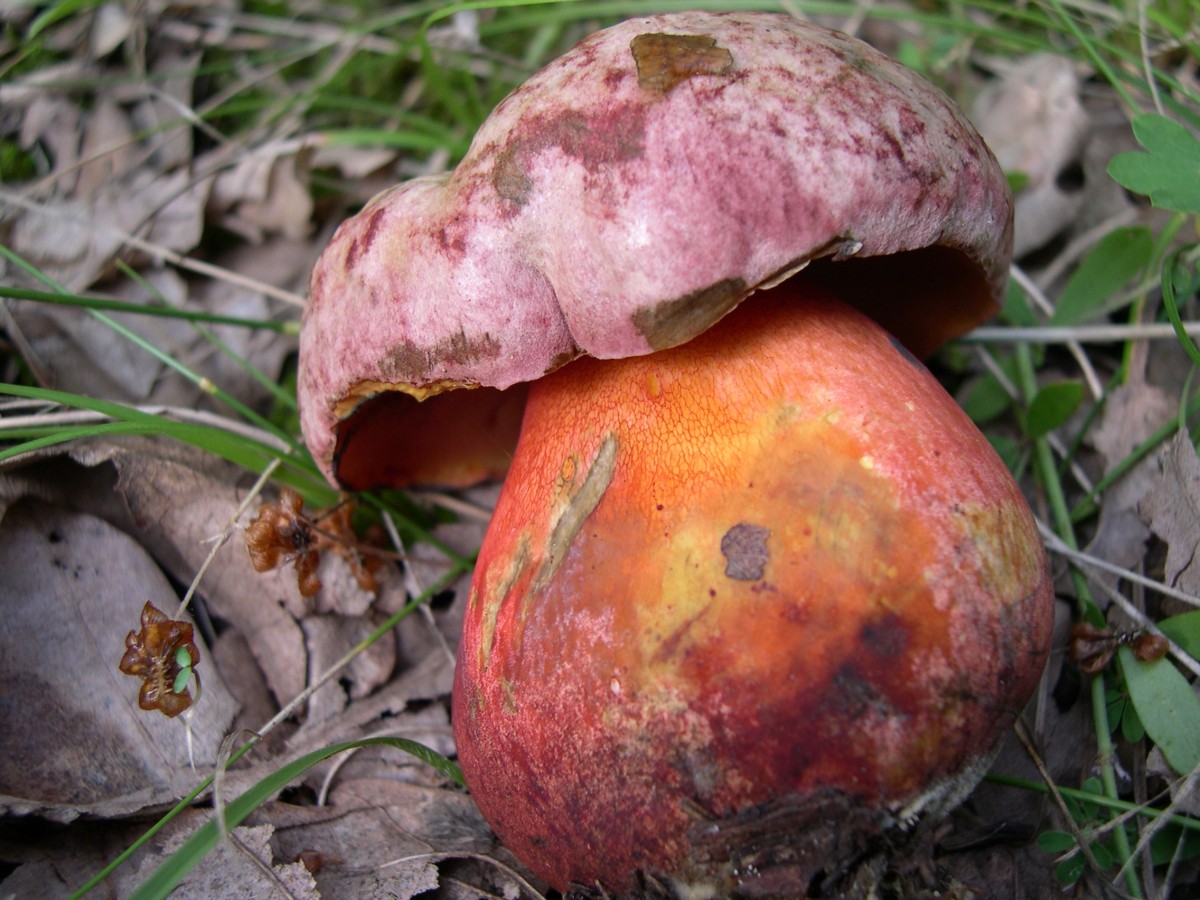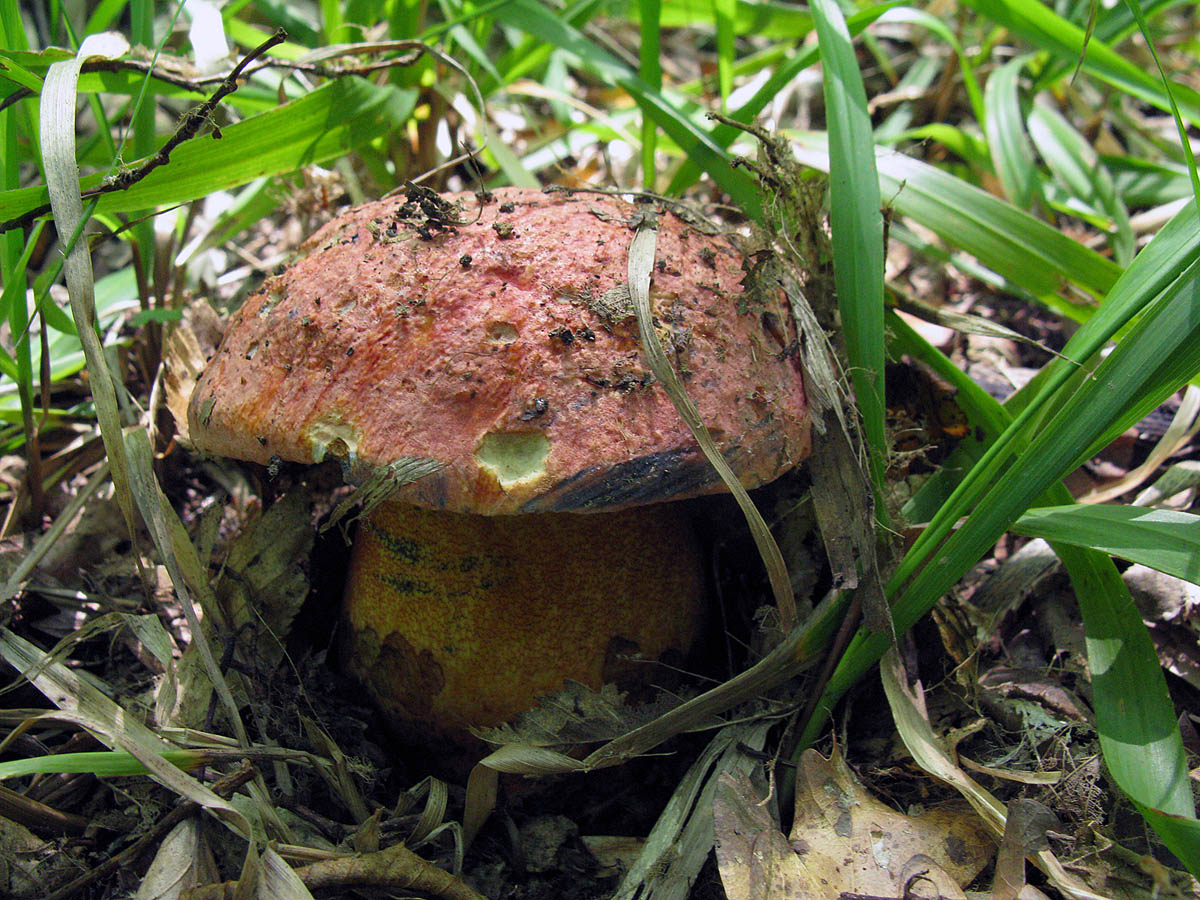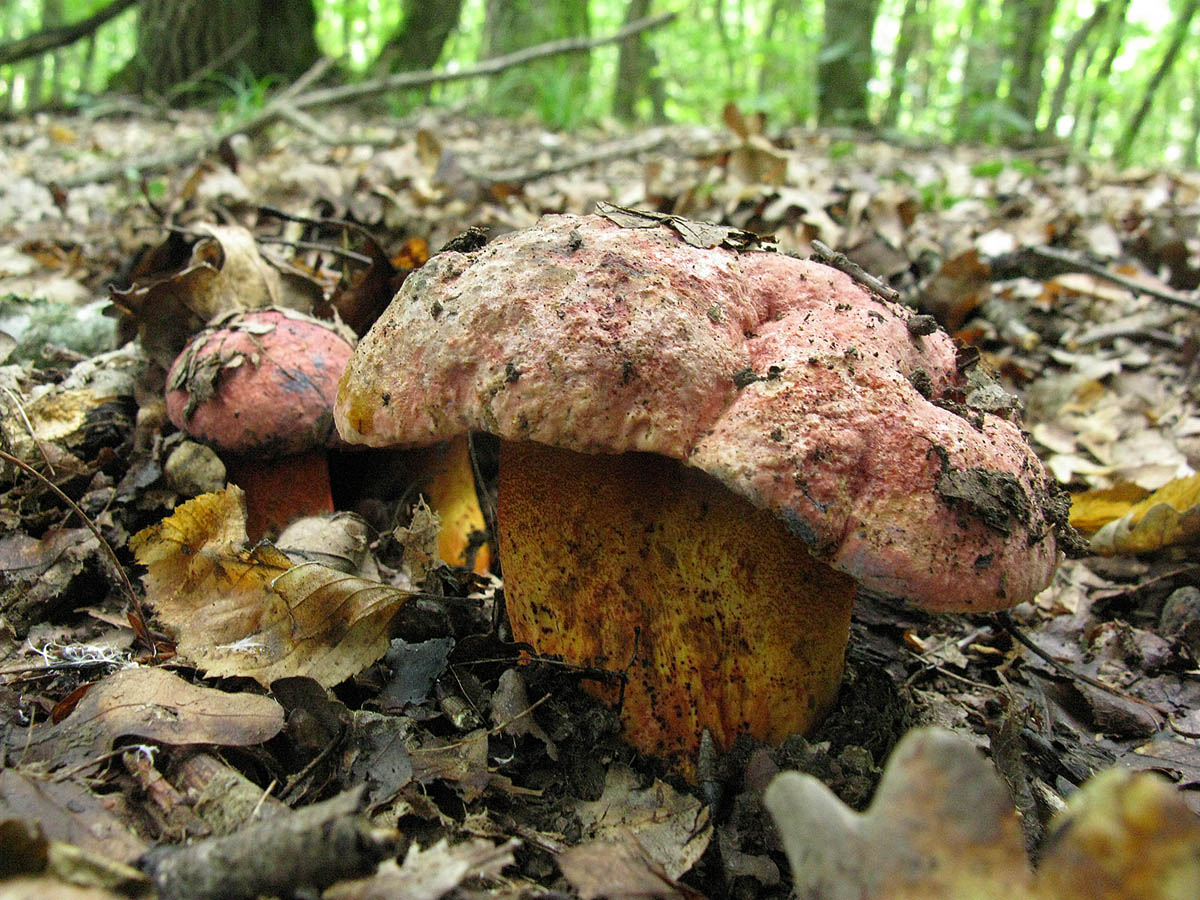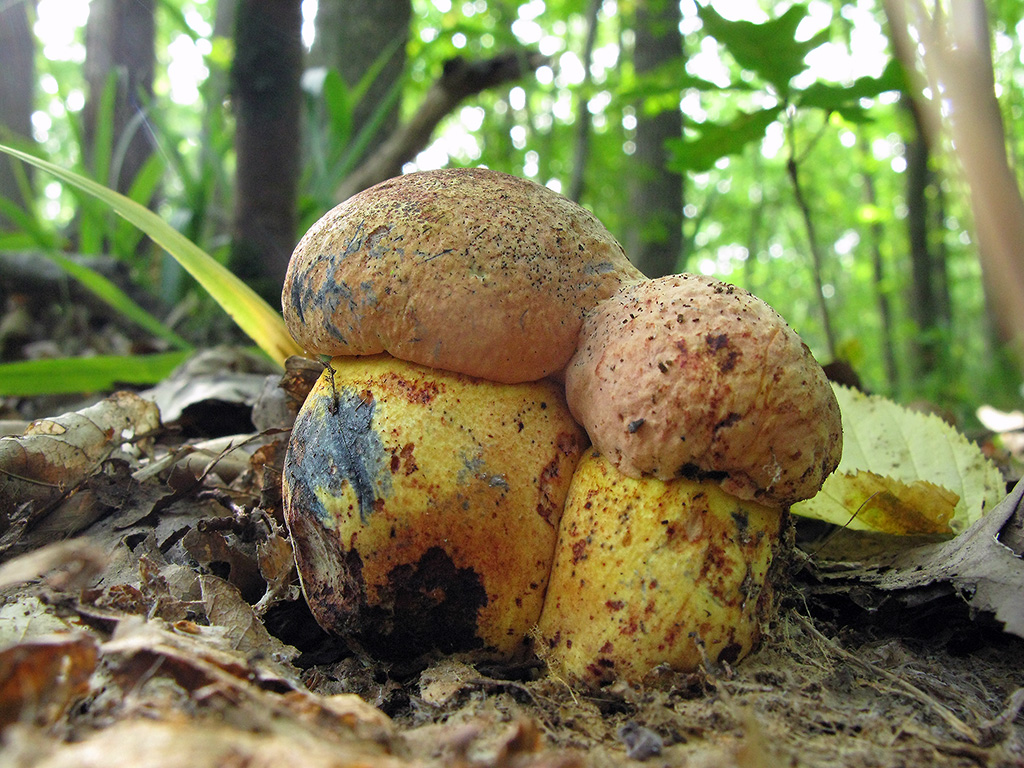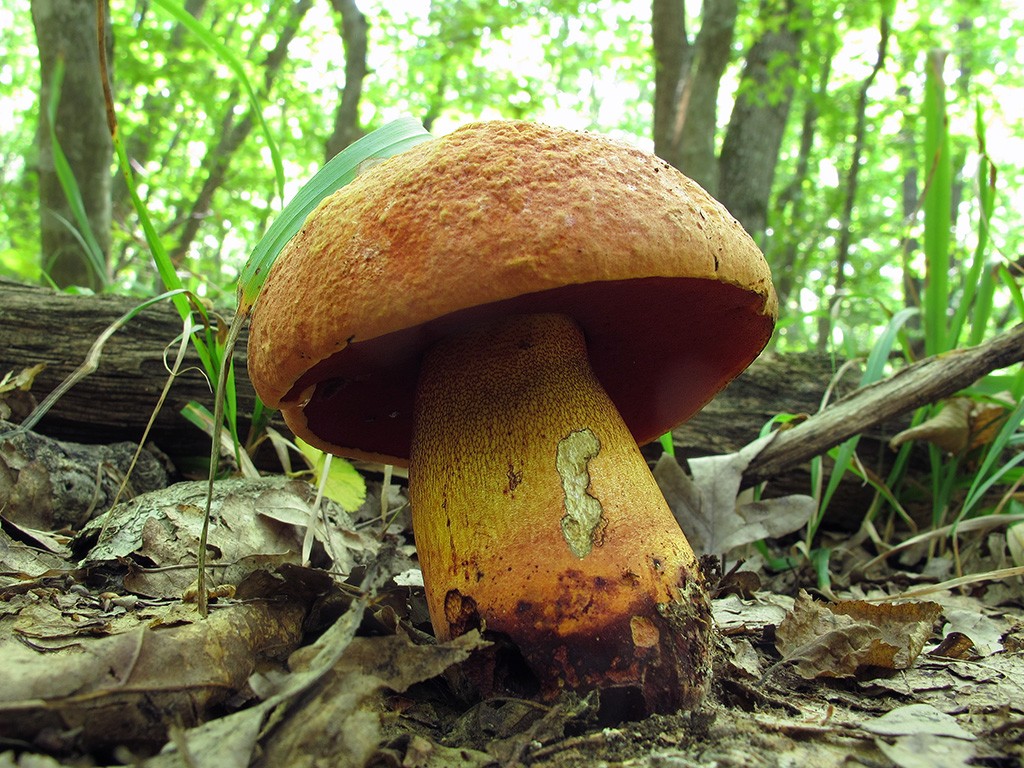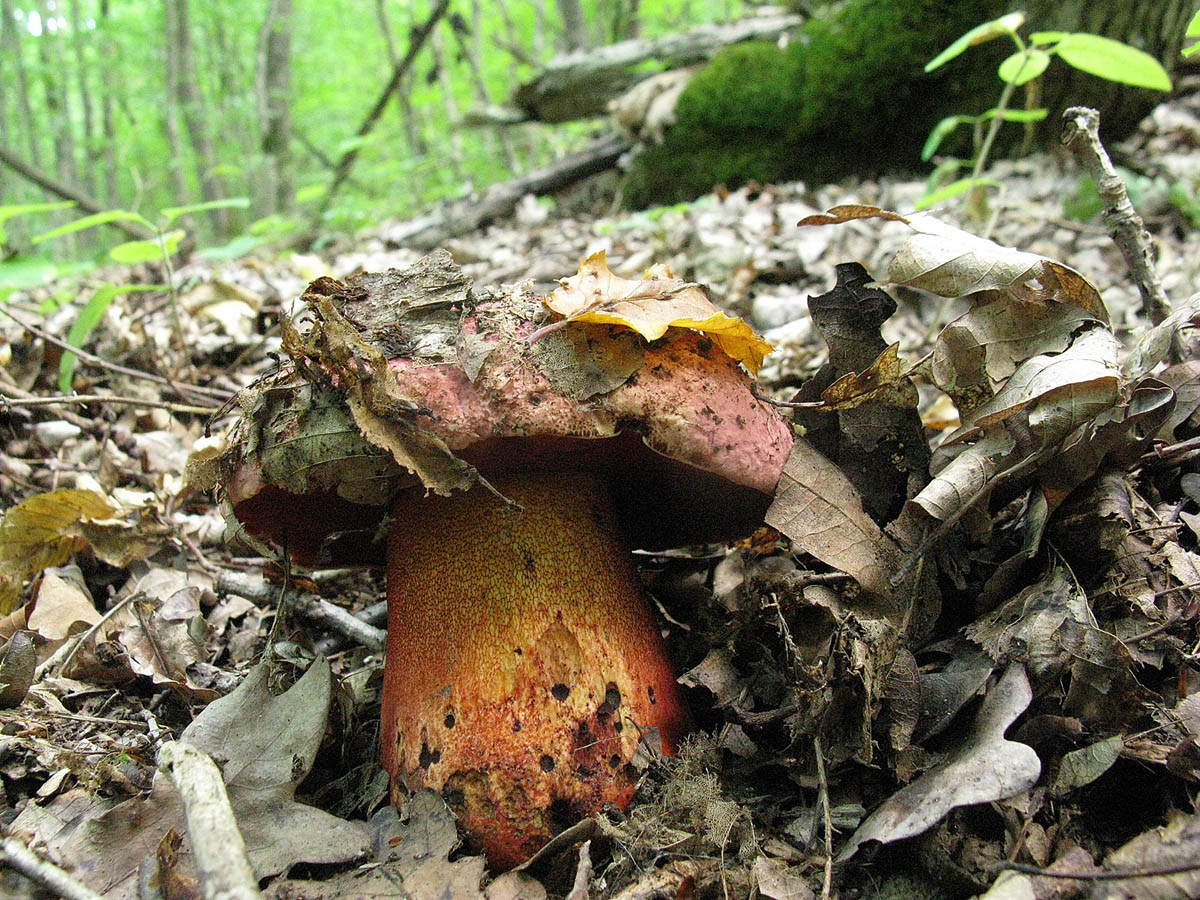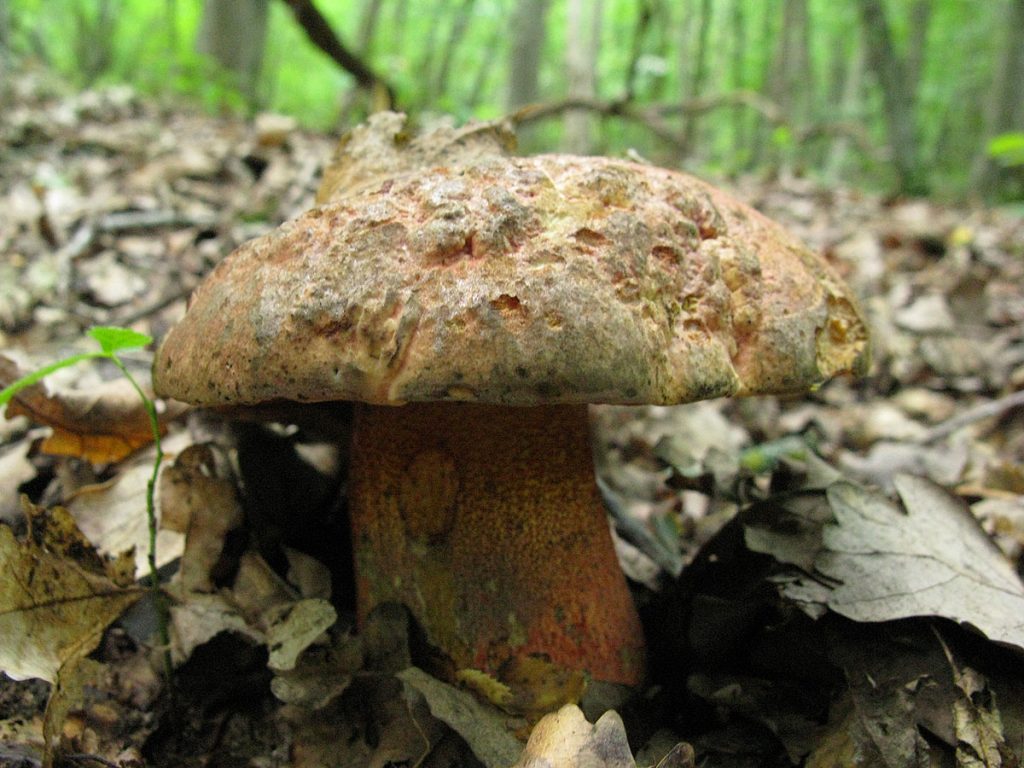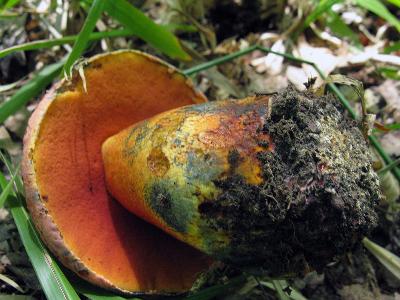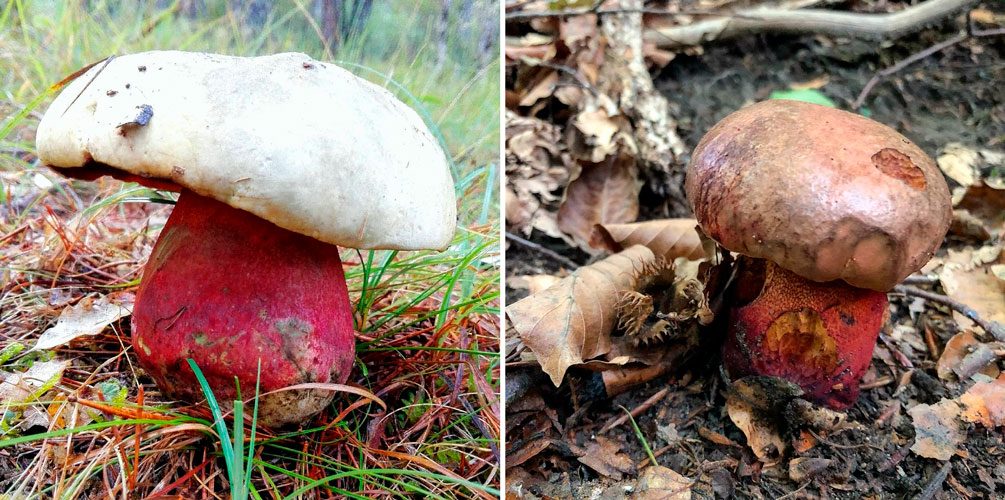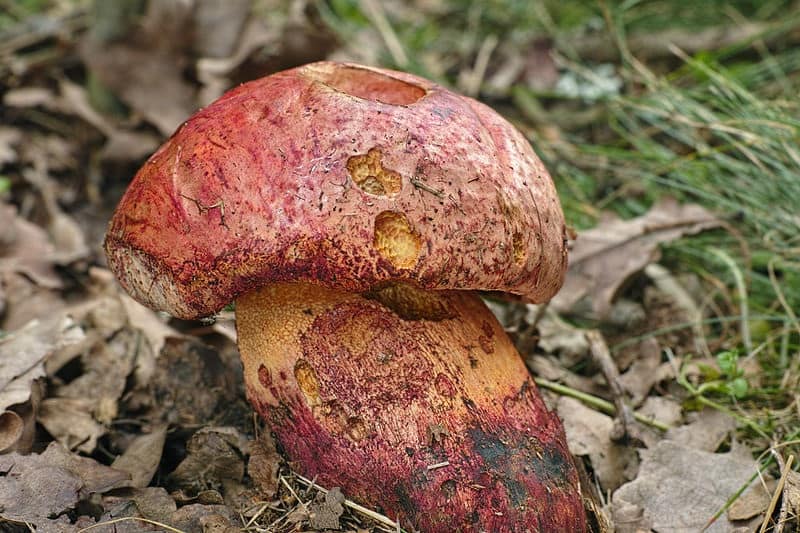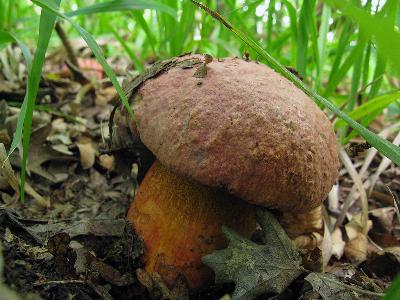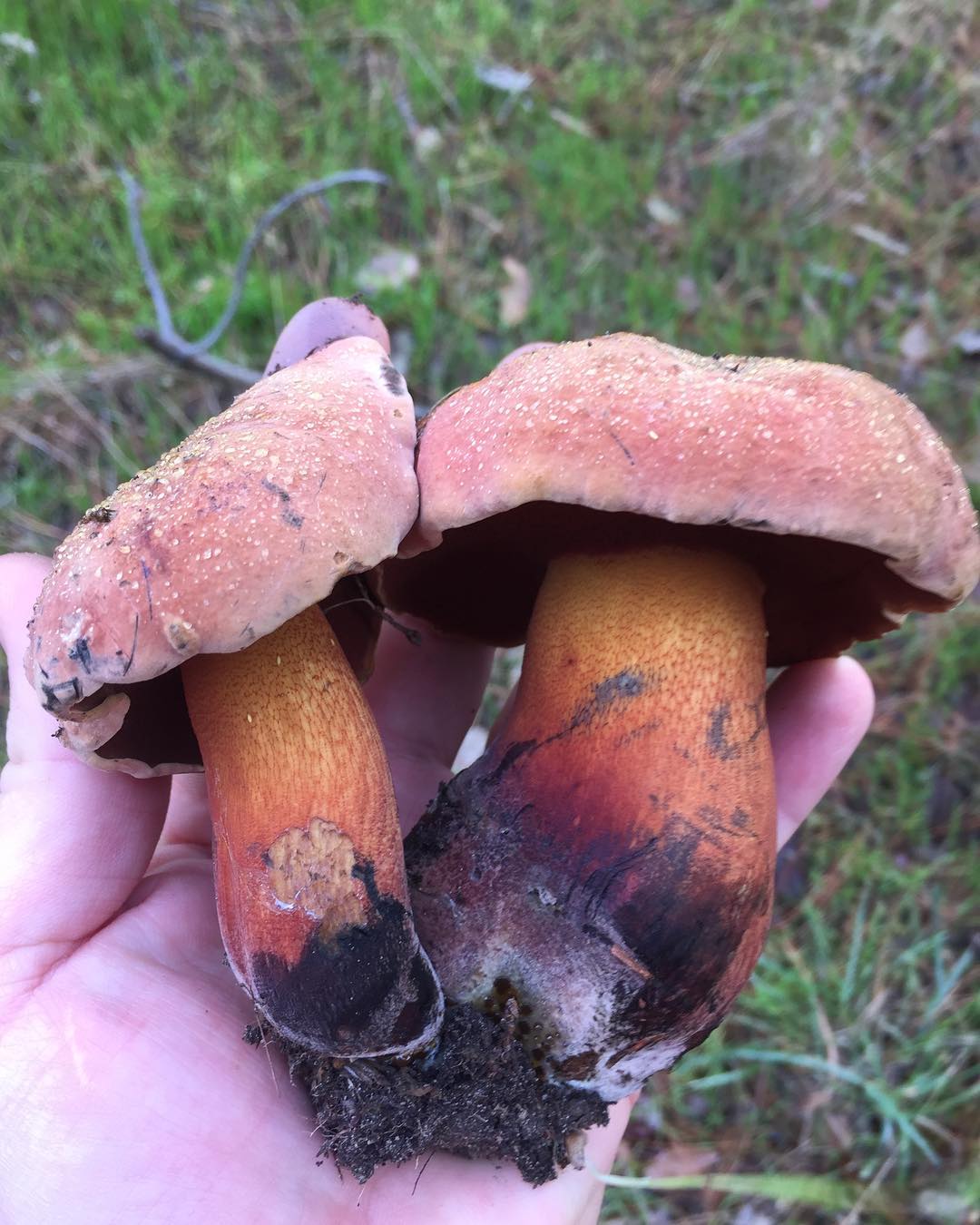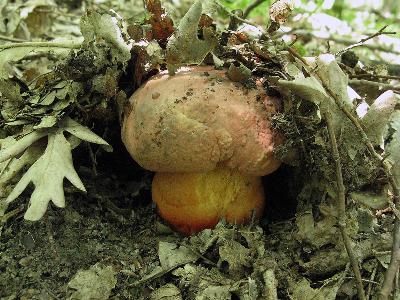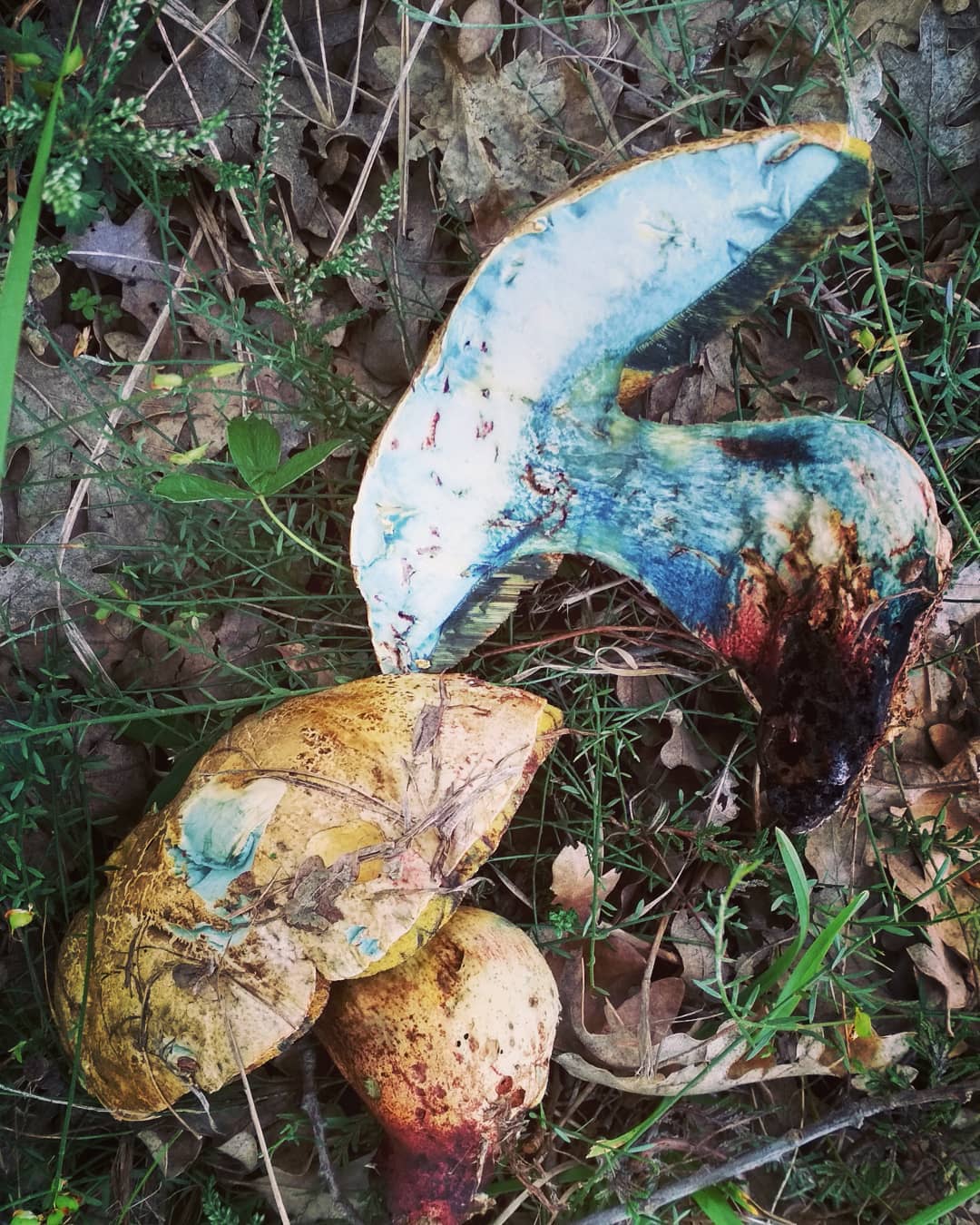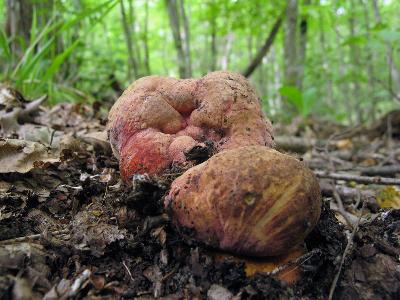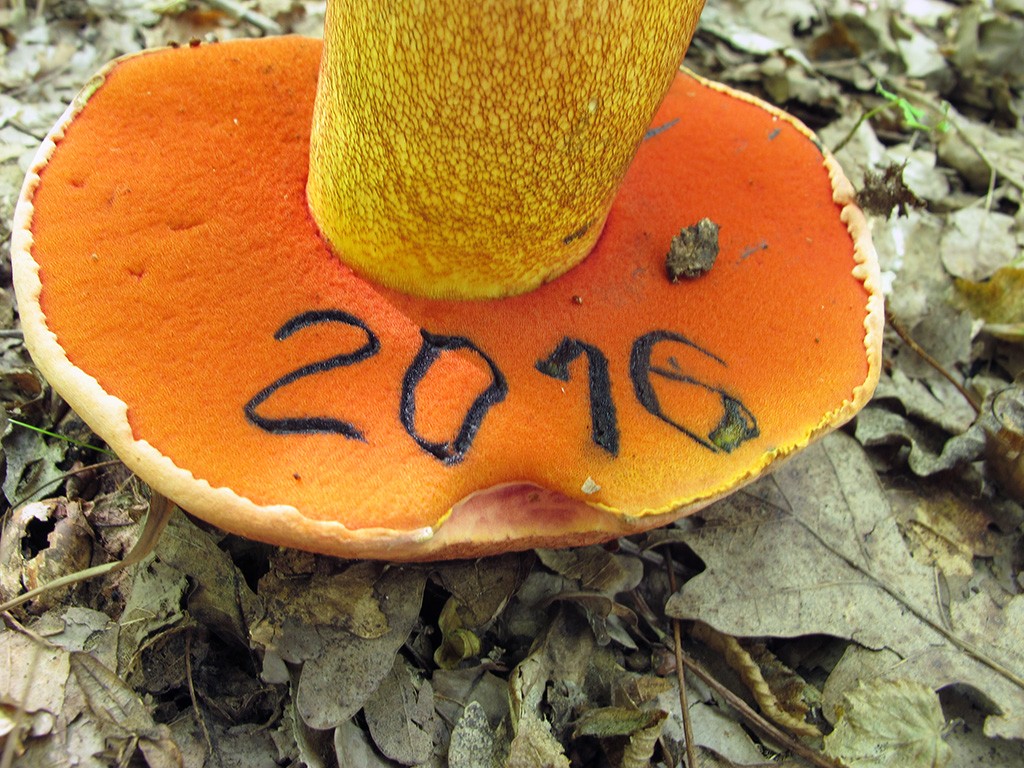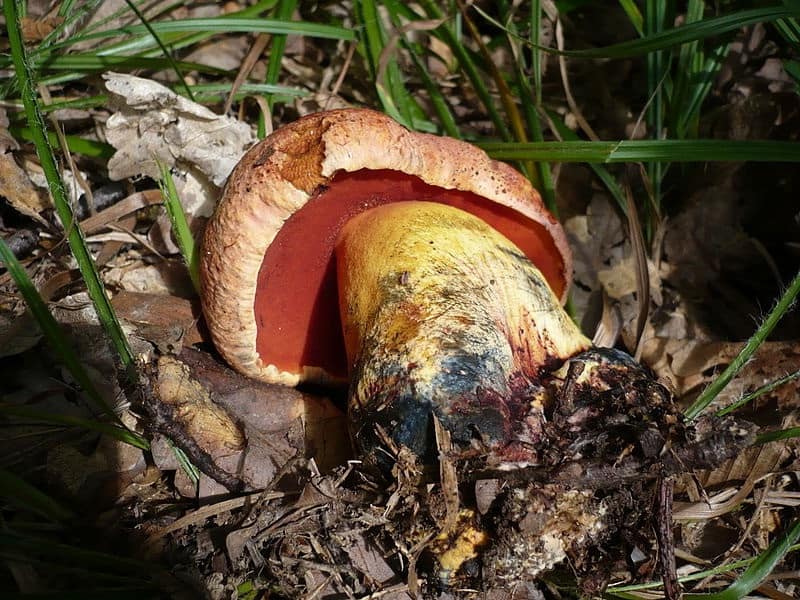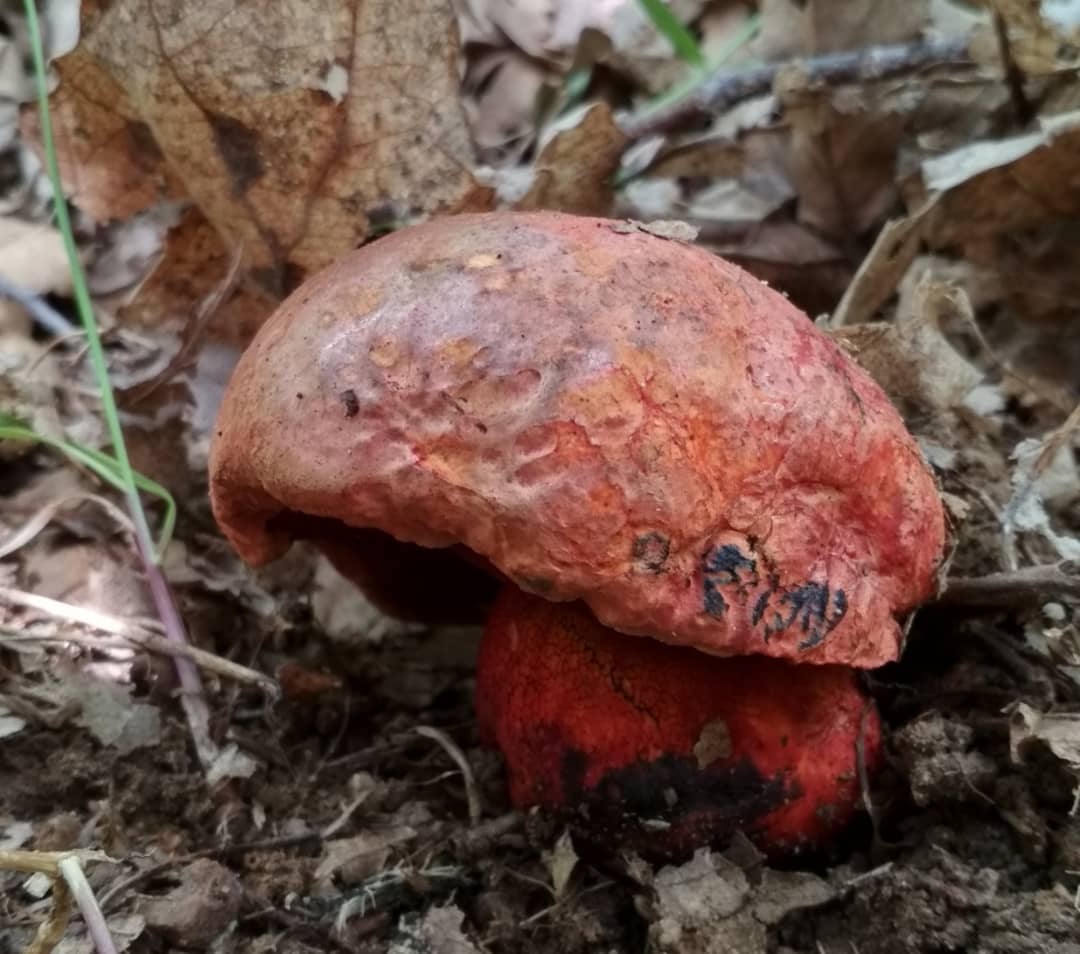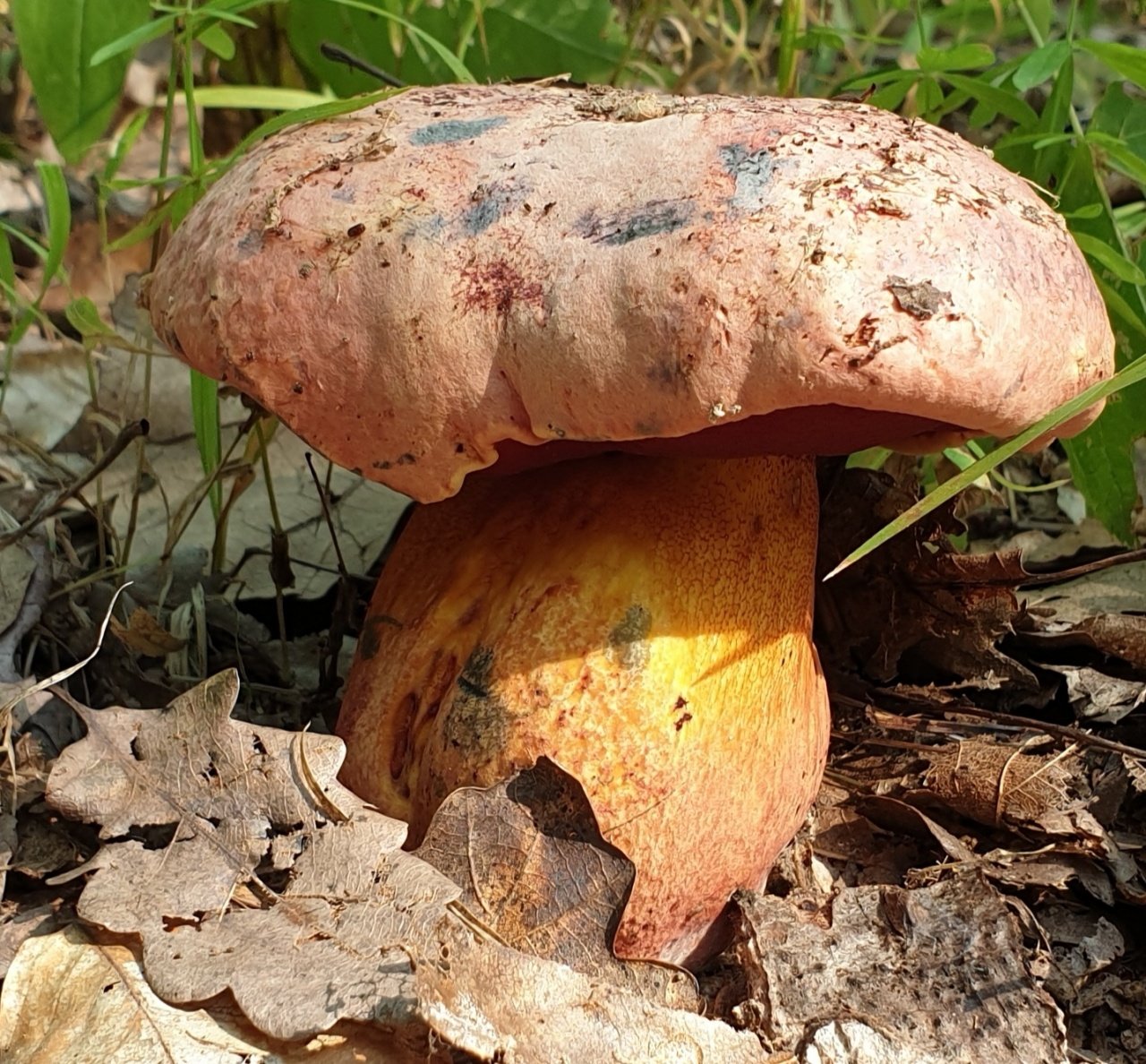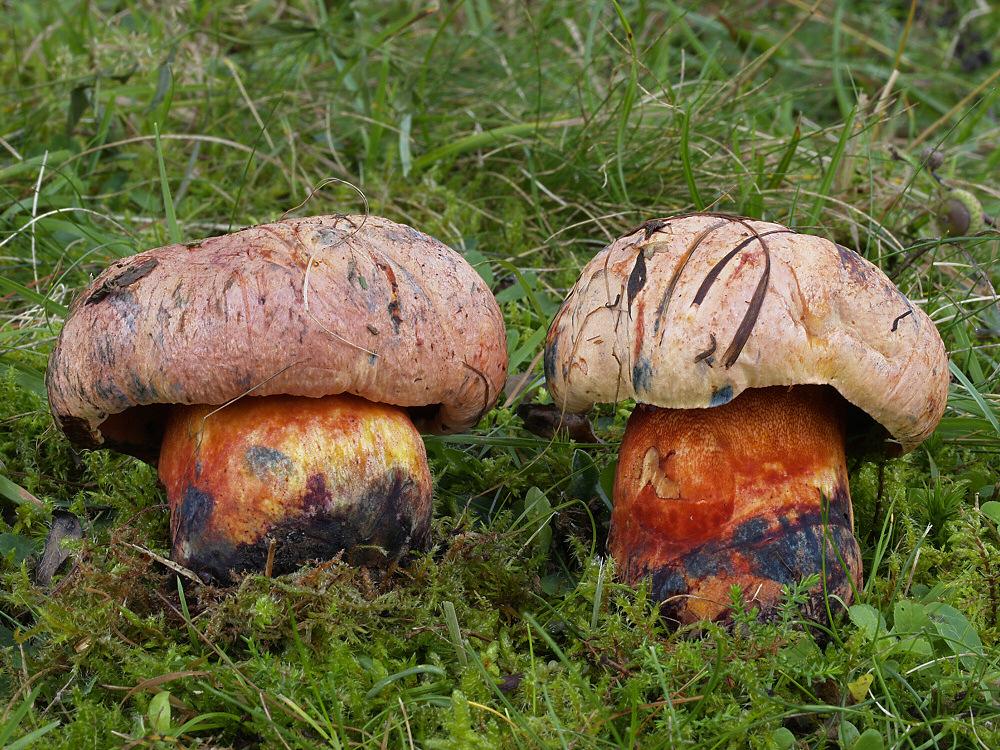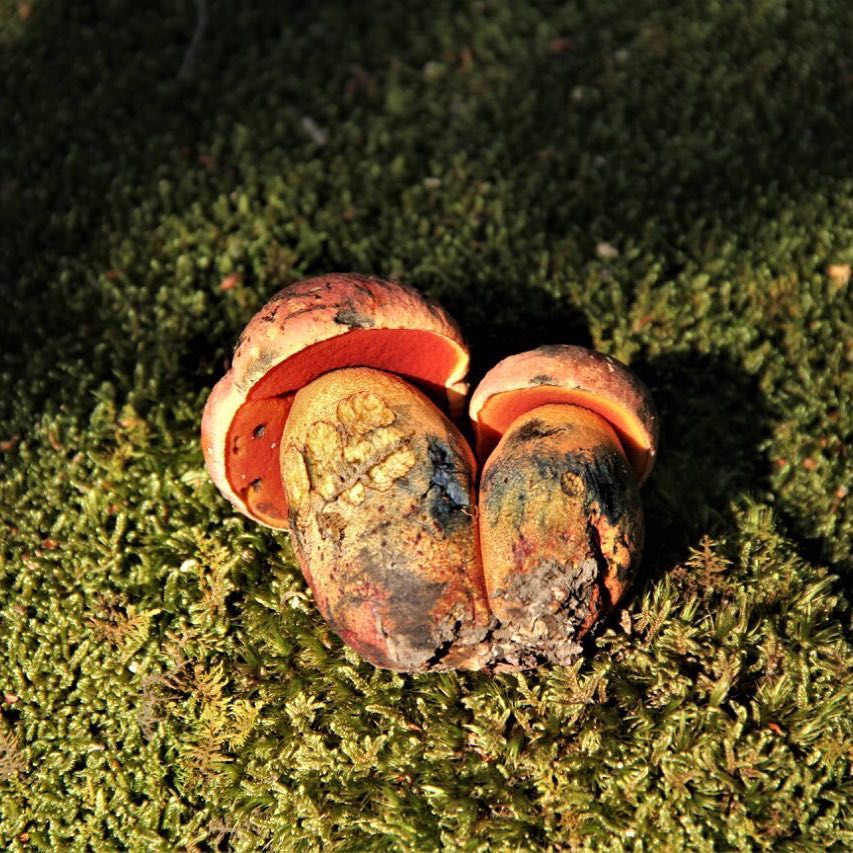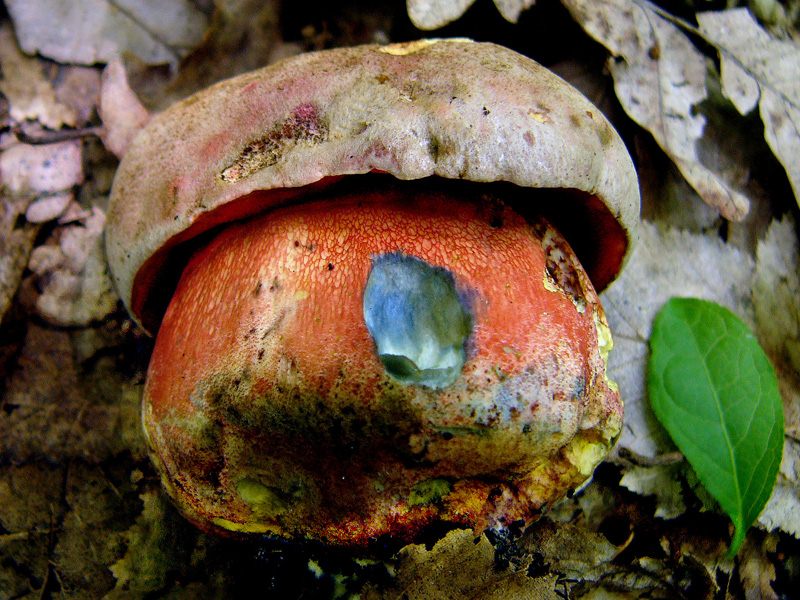Boletus pink-skinned: description, places of growth, related species
Pink-skinned boletus, he is pink-golden boletus, he is pink-skinned, is a poisonous mushroom of the Boletov family. These mushrooms have been studied very little, since they are rarely found. They are not harvested or cultivated.
The Latin name for the mushroom is Boletus rhodoxanthus.
Description of pink-skinned boletus
The diameter of the pink-skinned boletus cap is 7-20 centimeters. At first, the shape of the cap is hemispherical, and over time it opens up to the end and becomes like a pillow, after it is slightly pressed in the middle, and takes on a prostrate shape.
The skin of the cap is smooth, but sometimes it is a little velvety, and sometimes it is sticky. The color of the cap is brown-gray, or it can be dirty yellow, while there is a slight bloom of red along the edges.
The flesh of the pink-skinned boletus is quite dense, the leg is often much softer. The area near the tubes is also bright yellow. The taste and color of the pulp are mild.
This boletus can be up to 20 centimeters in height and up to 6 centimeters in diameter. At first, the stem is tuberous, but over time it becomes cylindrical, and the base is often pointed.
The color of the leg is lemon yellow, bright, and closer to the base it becomes wine red.
The tubular layer is usually light yellow or bright yellow, and in adulthood, the tubules may turn yellow-green or blue. The tubules are rather long, the pores are at first narrow and the same color as the tubules, but over time they become a rounded blood-red color.
Ecology and distribution of pink-skinned boletus
These mushrooms grow in light-colored deciduous forests. They form mycorrhiza with beech, oak, edible chestnut, hornbeam, hazel and linden. Give preference to calcareous soils.
Pink-skinned boletus are common in southern Europe, and also grow in the Caucasus and the Middle East. They bear fruit from June to September.
Poisonous boletus pink-skinned
Despite the fact that this type of mushroom is quite rare, cases of poisoning have been recorded. These mushrooms are poisonous both raw and cooked.
A few hours after eating pink-skinned boletus, symptoms of poisoning appear. Most often, sharp pains occur in the abdomen, accompanied by diarrhea, vomiting and fever. With a large amount of mushrooms eaten, convulsions and loss of consciousness may occur.
Fatal outcomes in case of pink-skinned boletus poisoning are practically not observed. All symptoms of poisoning disappear in a few days. But sometimes complications can arise, especially children and the elderly. Therefore, at the first signs of mushroom poisoning, they immediately consult a doctor.
Similar species
The pink-skinned boletus is outwardly similar to the satanic mushroom, they even have the same growing places. However, this particular species is much less common.
Edible members of this genus
Two-colored boletus can be recognized by its pink-red color. The shape of the cap is initially convex, and then becomes wide-spread. The yellow pulp turns blue on the cut. Most of these mushrooms can be seen in North America during the summer months.
Burroughs boletus has a hat with a diameter of 7 to 25 centimeters. Depending on the age, the shape of the cap can be convex or flat; at a young age, the caps are more rounded. The color of the cap can be from any shade of white to gray and yellow-brown. The leg length ranges from 10 to 25 centimeters.
These mushrooms are found mainly in the forests of North America. They form mycorrhiza with deciduous and coniferous trees. They grow in groups or in large clusters. In terms of taste, they belong to the 2nd category of edible mushrooms.
They are suitable for preparing soups, side dishes, sauces and other dishes.
Boletus royal has a bright red-violet or pink-red cap; with age, the color often becomes paler. The size of the cap is 6-15 centimeters. In young specimens, the cap is convex, and in old ones it can become completely flat. The leg reaches 15 centimeters in length and up to 6 centimeters in width.
The color of the leg is yellowish brown. Royal boletus is found mainly in beech forests. They grow in the Caucasus and the Far East. They prefer calcareous and sandy soils. They are collected from June to September. Royal boletus is a good edible mushroom with a dense, fragrant pulp that is highly prized.
These mushrooms are cooked and canned.
Emperor cylindrical Red Baron
This is the only genus of the Imperata, which is successfully used by landscape designers to add spectacularity to backyard areas, decorated in a natural, natural style. The plant is surprisingly undemanding and very easy to grow. Even a novice florist can easily cope with all the procedures.
Morphological features
- Cylindrical empire (Latin Imperata cylindrica) has many different names: reed-shaped impera, alang-alang, kogon grass, cylindrical lagurus, kazaro, bloody Japanese grass, red lightning.
- Belongs to the Cereals family and is a perennial, herbaceous plant. Its unusual color and unpretentiousness have been attracting gardeners in many countries for a long time. Red Baron (Red Baron) - the most famous variety and most often found in well-groomed areas.
- In warm countries, the impera is considered a weed and a rather aggressive plant. She is able to quickly capture large areas and displace other garden plants (herbs and flowers). In the middle lane there is nothing similar to the imperate, so it really is a decoration, and gives a special mood to the site.
- Stems and leaves are lanceolate, erect, tough. Not suitable as animal feed, have sharp edges and may injure.
- Under natural conditions, stems with narrow leaves stretch up to 80 cm; in gardens, the Red Baron variety grows to about 40 - 45 cm. The leafy plates narrowed in the upper part are located on the stem alternately, stretching upward. Outwardly, their structure resembles a knife blade.
- At first they have a bright emerald green color with a thin reddish edging. But closer to autumn, they gradually acquire a bright red, scarlet hue.
- The root system is narrow and has numerous shoots spreading in different directions from the central rhizome.
It is extremely rare in April that the flowering period begins: a panicle is formed on a long peduncle with a huge number of whitish-cream-colored villi. Length 15 - 17 cm. Reproduction of the plant occurs with the help of lateral shoots.
The Red Baron variety differs from the species specimens in its ability to change color during the spring-summer season and in the structure of sharp and upward-looking leaves.
In many Asian countries, the impera is used in medicine and cosmetology, even as a covering for roofs. The plant perfectly tolerates temperature extremes and frost.
Application in landscape design
The impera looks very harmonious in Japanese gardens, giving a unique mood, and standing out with a bright accent spot.
Many growers represent the Imperate Red Baron variety in mixborders and among other original cereals.
Experienced plant breeders recommend planting the empire next to millet, junipers, bush roses, horny goat weed, miscanthus, cypress, primrose, elderberry and barberry, as well as in compositions with trimmed trees and shrubs.
The use of imperates to add brightness to a site is universal.It looks appropriate everywhere: in a garden decorated in the English style, stylized as a prairie thicket, and among ordinary garden flowers. Looks great among stones and conifers.
Characteristics of the species
Eupatorium Purpureum (lat. Eupatorium Purpureum) is a typical representative of the Astrov family and owes its name to leaves that strongly resemble the leaves of hemp, which was formerly called "poskon". The plant is native to North America, where it can often be seen in the wild. In addition to the American continent, the stethosis is widespread in Eurasia and in South Africa. In our country, the plant is equally often found both in the European and Asian parts of it and has many popular names.

So, in one locality it can be called a hatchery, hemp plant, royal grass and deaf nettle, while in other regions it is called hemp noble, horse mane, turnip and sedach. The flower feels great in various ecosystems and grows equally well in the forest, in the meadow and along the river banks. Due to its absolute unpretentiousness, the plant grows rather quickly and forms colonies vast in area.
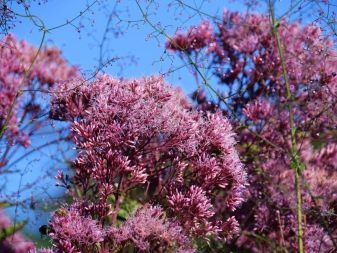
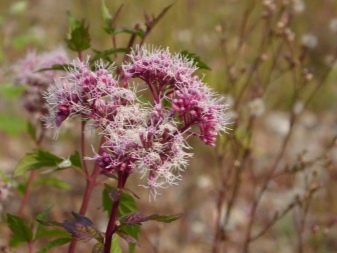
As for the description of morphological characters, the plant is a tall herbaceous shoot, reaching a height of up to 2 meters. The stem of the purple stew has a straight, strong structure and practically does not branch. Along its entire length, there are large oblong leaves of a deep green color with purple or lilac veins. The rhizome of the plant is quite well developed, which allows it to easily hold the overgrown dwarf shrub, which becomes quite heavy over time.
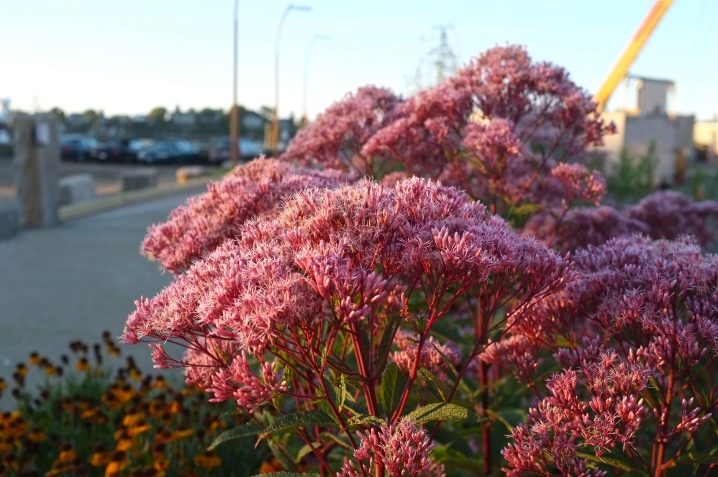
The plant begins to bloom in early-mid-August and ends closer to October. Small flowers are collected in baskets, which, during flowering, look like voluminous flowering caps up to 30 cm in diameter. The fruits of the plant look very unusual and are presented in the form of crested achenes, inside which there are small rough seeds. But even after the end of flowering, the plant looks very beautiful and noble. By this time, the stem acquires a pink tint and looks quite impressive against the background of bright green leaves.
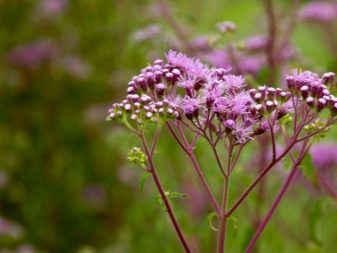
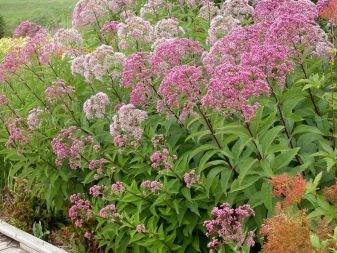
Bone Stem Care
Growing Evpatorium does not require much effort. The gardener must create conditions that are as comfortable as possible for the plants growing on the site.
| Factors | Conditions |
| Lighting | Loves light, but it is strictly forbidden to expose to direct sunlight for a long time. The selected location must be open. If the plant is planted in the shade, the flowering period will be significantly reduced, and the corollas will be less lush. |
| Disembarkation | It is usually held in early March. At a later date, the plant may not take root. When transplanting a large bush, dig a hole. The distance between the holes should be at least 1 m. Before planting the plant, a mixture of bone meal, ash and humus is poured into it. The roots of the steep shed must be freed from the old soil. After the cuttings are fixed, they compact the ground and water the transplanted plant. |
| The soil | It should be loose and fertilized. Neutral acidity becomes an important condition. Do not plant in sandy loam soil and loam. To prevent compaction of the soil, it is regularly loosened. |
| Humidity | Needs a lot of fluid. Landing near water bodies is one of the best options. Watering should be frequent and abundant. |
| Top dressing | Required for more lush flowering and active growth of the steep. To achieve the maximum effect, it is recommended to use mineral complexes. Throughout the season, fertilizer is applied 2-3 times. The frequency depends on the condition of the soil. |
Pruning is another important step. It promotes crown formation. Timely removal of wilted corollas is the prevention of self-seeding. Plants belonging to high varieties need a garter.If this method contradicts the design, the Evpatorium is planted near the fence. The shoots of the steep are removed when preparing the plant for wintering.
There are several ways to get new plants. Among them:
- division of an adult bush;
- cutting off shoots;
- rooting of cuttings.
The first method is considered to be the simplest. The division can be carried out in the fall or spring (once every 5 years):
- Only long shoots are pruned. The minimum length of the remaining part is 20 cm. The seedlings must have at least three growth points.
- The place where the damage to the functional layers has occurred must be treated with a special solution.
- The bushes are planted in wells prepared in advance.
When choosing the second method, take into account the height of the shoots, the number of recovery buds and the season. Cutting is carried out only in the spring:
- Before you start, you need to prepare a container for seedlings.
- Each shoot, separated from the bush, must be shaded.
- Watering should be moderate.
- Rooting of the kidneys occurs in a month.
- After that, the steep can be transplanted into the garden.
Cuttings are a method of vegetative propagation. The green pieces are cut at the end of the first summer month. Among the necessary conditions:
- the length of the alleged cuttings is from 10 to 15 cm;
- the presence of three points of growth.
To achieve rooting, cuttings are placed in a mixture of peat and sand. They are covered with plastic wrap from above. This stage lasts 30 days.
Planting and caring for the cylindrical Emperor Red Baron
Based on the fact that the cylindrical emperor Red Baron in temperate latitudes does not have the property of actively multiplying, then it can be planted without worrying about other cultures.
Recommended timing
The optimum temperature for growing the cylindrical imperate Red Baron is from +22 to +27 ° C.
For areas with harsh climates, pre-planting in containers is practiced.
Site selection and soil preparation
In order for the Emperor Red Baron to receive the maximum amount of heat and light, it is necessary to plan a landing on the southern or western part of the site.
Placement in partial shade is also possible, but it is desirable that the plant be illuminated by the sun for several hours during the day.
Important! With a lack of sunlight, the leaves will not produce a coloring pigment, which will affect the decorative effect of the culture.
For planting a cylindrical imperial, light loam, sandstone, which have such properties as the absence of moisture stagnation, excellent ventilation and ease of processing, are suitable. The acidity of the soil should be in the range of 4.5-7.8. The most important thing is the availability of high-quality drainage.
How to plant correctly
Before planting, the Red Baron empires dig spacious holes in the open ground, which are twice as large as the roots of the seedlings (about 20 cm). The bottom must be mulched with compost, mineral fertilizer is poured on top.
Carefully place the seedling in the hole and cover it with a fertile layer of soil, carefully watered and tamped the ground. The soil around the seedling is mulched with compost or peat. The thickness of the mulching layer is at least 3 cm.
Watering
During dry periods, the Red Baron is regularly watered. To check the moisture content of the soil, they carefully deepen into the ground by 5-10 cm. If the topsoil is dry at a depth of up to 2 cm, the impera is watered.
The cylindrical imperate has no special requirements for air humidity.
Top dressing
Provided that the cylindrical impera has been planted correctly, no additional feeding is required.
At the beginning of spring, it is necessary to fertilize with potash fertilizers, and in the fall to add compost. It is advisable to feed with organic and complex mineral fertilizers several times during the growing season.
Preparing for winter
Cylindrical imperata Red Baron has high winter hardiness. Up to -26 ° C can winter outdoors without shelter. But it is better to insulate the plant with peat or mulch from dry leaves and cover it with an old blanket on top.
In colder climates, the impera is grown in containers and brought indoors in winter.
Every year, in the fall, the impera is pruned 10 cm from the ground.
At the end of the growing season, the plant is mulched. If there are green shoots on the Red Baron bush, then they must be cut off.
Periodically, old bushes rejuvenate: they dig up and remove all old shoots to the roots.
Pink-purple boletus (Imperator rhodopurpureus)
Synonyms:
Boletus rhodopurpureus

The diameter of the cap is 5-20 centimeters. At first it has a spherical shape, later it becomes convex with slightly wavy edges. The velvety dry skin in wet weather becomes a little slimy, forms small tubercles. Boletus pink-purple has an uneven color: gray or olive-gray background with wine, red-brown or pink areas. If you press on the surface of the mushroom, then it will be covered with dark blue spots. It is often damaged by insects, and yellow flesh can be seen in these places.
Tubular layer of lemon-yellow color, which later turns into greenish-yellow. The pores are blood-red (or orange-red), small, turn blue when pressed. Spore powder of olive brown color.
The leg of the fungus grows up to 15 cm in height, the diameter reaches 7 cm. At first it has a tuberous shape, and later becomes cylindrical, has a clavate thickening. The color of the leg is lemon yellow, there is a reddish dense mesh, which, when pressed, turns black or blue.
Young specimens have a firm lemon-yellow flesh, which, when damaged, very quickly turns blue-black, and after a long time turns into a wine color. The mushroom has a sweetish taste and produces a mild sour-fruity aroma.

Boletus pink-purple loves to grow on calcareous soils, prefers hilly and mountainous areas. It can be found in mixed and deciduous forests next to oak and beech trees.
You cannot eat the mushroom raw or undercooked because it is poisonous. It is better not to collect it at all, since it is quite rare and little studied.
The habitat of this mushroom extends to Russia, Ukraine, European countries. Places with warm climates are preferred. It is very similar to edible mushrooms such as Boletus erythropus and Boletus luridus, as well as the satanic mushroom (Boletus satanas) and other similarly colored pains.
How to grow gladioli: how to plant bulbs and care for plants
They start planting corms of gladioli as soon as the soil at a depth of 10 cm warms up to 8-10 ºС, i.e. late April - early May. With a delay in planting, rooting conditions and further development worsen. Corms are planted in rows. The distance between the bulbs should be 12-15 cm for early varieties, 20-25 cm for medium and late, forming larger plants.
Planting depth is from 10 to 15 cm, depending on the size of the corms and the mechanical composition of the soil. With a deeper planting, flowering occurs a few days later. In a cold summer, with a deep planting, the defeat of corms by fungal diseases increases.
When caring for and growing gladioli, remember that these plants are demanding on soil moisture, very sensitive to its lack during budding, i.e. in the phase of the 4th - 5th leaf and especially in the phase of inflorescence formation. Lack of moisture during these periods leads to deformation of the inflorescence, poor development of the root system.
In the process of caring for gladioli, do not forget about feeding.
The first feeding after planting gladioli bulbs when caring for plants is carried out after the appearance of 2 - 3 leaves: 1 tablespoon of urea and liquid fertilizer "Agricola - Rose" are diluted in 10 liters of water. Spend 1 liter per plant.
The third feeding is carried out during the budding period, i.e. in the phase of the 5-6th leaf: dilute 1 tablespoon of Agricola-7 and organic fertilizer "Flower" into 10 liters of water.
The fourth feeding is carried out during the period of the appearance of the first flower on the inflorescence: 1 tablespoon of potassium sulfate and liquid fertilizer "Agricola - Rose" are diluted in 10 liters of water. Spend 1-2 liters per plant. This solution increases the duration and intensity of flowering, promotes the enlargement of flowers and peduncles.
Depending on the variety and weather conditions, the flowering of gladioli can last for 3-4 weeks. Cut and standing in the water gladioli bloom all flowers - from the bottom to the top. In order for the flowers to retain their attractive appearance longer, it is necessary to periodically pluck the wilting flowers. It is better to cut off inflorescences of gladioli early in the morning or late in the evening in the initial flowering phase, when 2-3 flowers have fully opened. Flowers stand in water for a long time until the last bud opens. To ensure the maturation of the replacement corms, at least 5-6 leaves are left on the plant when the inflorescences are cut. Watering after flowering is gradually stopped, since dry soil will contribute to the ripening of corms.
Cutting gladioli for bouquets results in stronger bulb formation. The next year, a lush plant will grow from it. After the flowers wither, gladioli in flower beds are recommended to be cut. This must be done before the fruit ovary appears, so that the forces of the plant are directed towards the accumulation of nutrients in the bulb. It is necessary to cut the flowers so that 4 leaves remain on the plant.
Many gardeners complain that gladioli change their color over the years and turn either white or pink. In this regard, the question arises: are these plants not over-pollinated? Is it possible to plant flowers of light and dark shades nearby? The answer is unambiguous - you can. Gladioli are not pollinated. What happens to the bulbs, why do the inflorescences grown from them become the same color?
The thing is that even a varietal onion is capable of degenerating. If you receive planting material from one bulb from year to year, then over time it loses its original properties. But if you work a little and every year grow new planting material from the children, which can be seen in large numbers around the new bulb, your favorite varieties of gladioli will always be in abundance.
Next, you will learn when to dig up and how to store gladioli.
Pink-skinned boletus (Rubroboletus rhodoxanthus)
Synonyms:
- Boletus pink-skinned
- Boletus pink-golden
- Suillellus rhodoxanthus
- Boletus rhodoxanthus
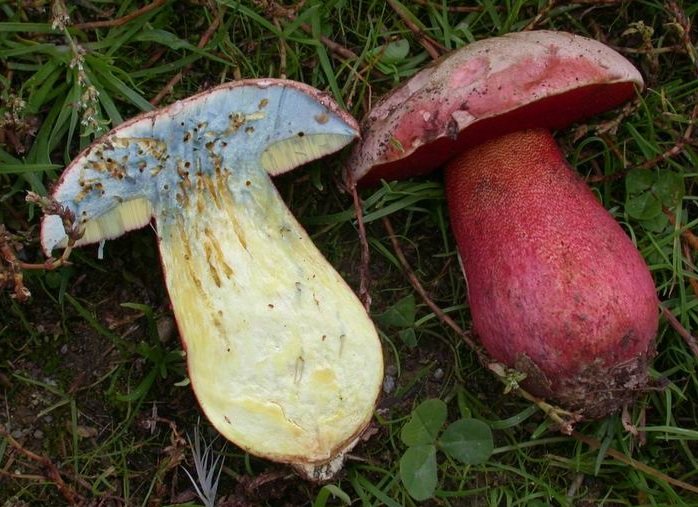
This mushroom belongs to the Borovik genus, which is a member of the Boletaceae family. Pink-skinned boletus has been studied very little, because it is quite rare, it is not subject to cultivation, since it belongs to poisonous.
The diameter of the cap can reach 7-20 cm, its shape is at first half spherical, and then it opens up to the end and takes the form of a pillow, then over time it is slightly pressed in the middle and becomes prostrate. The hat has a smooth or slightly velvety skin, sometimes it is sticky, its color is brown-gray, and it can also be dirty yellow with a slight bloom of red at the edges.
The flesh of the mushroom is quite dense, the leg may be slightly softer. The body of the stem is lemon-yellow, bright, the area near the tubes is of the same color, and closer to the base the color becomes wine-red. The place of the cut takes on a blue tint. The mushroom has a weak taste and smell.
Pink-skinned boletus can grow up to 20 cm in height, and the diameter of the leg can reach 6 cm. At first, the leg has a tuberous shape, but then it gradually becomes cylindrical, very often with a pointed base. The lower part of the leg is colored bright red, and a yellow tint appears above. The entire surface of the peduncle is covered with a bright red convex net, which at the beginning of growth has a looped structure, and then stretches and becomes dotted.
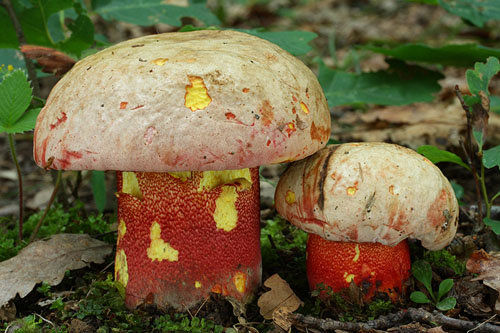
The tubule layer is usually light yellow or sometimes bright yellow, and the mature mushroom can be yellow-green or blue in color.The tubes themselves are quite long, their pores are at first narrow and similar in color to the tubes, and then they acquire a blood-red or carmine color and a rounded-angular shape. This boletus is similar to the satanic mushroom and has the same habitats, but is quite rare.
Despite the fact that pink-skinned boletus can be found infrequently, cases of poisoning with this particular fungus are known. It is poisonous both raw and after careful processing. Symptoms of poisoning become noticeable after a few hours after using it. Most often these are sharp stabbing pains in the abdomen, vomiting, diarrhea, fever. If you eat a lot of mushrooms, then the poisoning will be accompanied by convulsions and loss of consciousness.
Deaths from poisoning with this fungus are practically unknown, all symptoms of poisoning disappear after a few days. But sometimes various complications can arise, especially for the elderly and children. Therefore, it is imperative that when the first signs of poisoning appear, you must consult a doctor.
Video about the mushroom Borovik pink-skinned:
Mushroom photo Boletus pink-skinned from questions in recognition:
LAT
Specifications:
| Group: | Tubular |
|---|---|
| Plates: | Yellow, red |
| Colour: | Brownish gray or yellowish brown |
| Info: | The pulp turns blue at the break |
Systematics:
| Department: | Basidiomycota (Basidiomycetes) |
|---|---|
| Subdivision: | Agaricomycotina (Agaricomycetes) |
| Class: | Agaricomycetes (Agaricomycetes) |
| Subclass: | Agaricomycetidae |
| Order: | Boletales |
| Family: | Boletaceae |
| Genus: | Boletus |
| View: | Boletus rhodoxanthus (Boletus pink-skinned) |
It is poorly studied due to its rare occurrence and therefore is considered inedible. Raw mushroom is poisonous.
How beautiful to plant gladiolus flowers in the garden (with photo)
In any landscape design, flowers are necessarily used as one of the main decorative elements. They have a bright color, long flowering periods and fill the air with a pleasant fragrance. Due to these properties, flowers are planted in almost any area. Special places are allocated for flower beds, which can be located in front of the house, along fences and paths, near water bodies, or break them against the background of a lawn. You can create a flower garden of any size and shape, it all depends on the size of the site and the imagination of its owner. If you choose the right flowers and place them in a flower garden, then they can delight the eye with their flowering from early spring to late autumn.
Flowers are of two types: annuals and perennials. Sometimes flowers from different groups are grown in the same flower garden. Before you start creating a flower garden, you need to think about how it will be combined with the rest of the landscape design elements.
When choosing a place for a flower garden, several factors must be considered.
First you need to choose the main points of view, from where the flower garden will be clearly visible. These points include the entrance to the site, house windows, gazebos, paths, garden benches. You can set up a flower garden in such a place that it is visible from almost anywhere on the site. But at the same time, it is necessary to ensure that the magnificent flower garden does not obstruct the rest of the picturesque corners of the garden.
Next, you need to decide what type of flower garden you are going to create in each specific area of the site. Each species has a specific purpose, on which the location of the breakdown depends, as well as the choice of plants for the flower garden.
The most beautiful gladioli in group plantings. In flower beds, they are usually planted in the background or in the center. Lower plants are planted in front of them to hide the soil and the lower part. Often these flowers are planted along the fences, which are the background and support for them.
See how beautiful the gladiolus flowers in the garden are in these photos:
Gladioli are combined with lower Houston ageratum, marigolds, phloxes, dahlias. Flower gardens on which gladioli grow next to plants with silvery leaves, such as wormwood, look beautiful.

